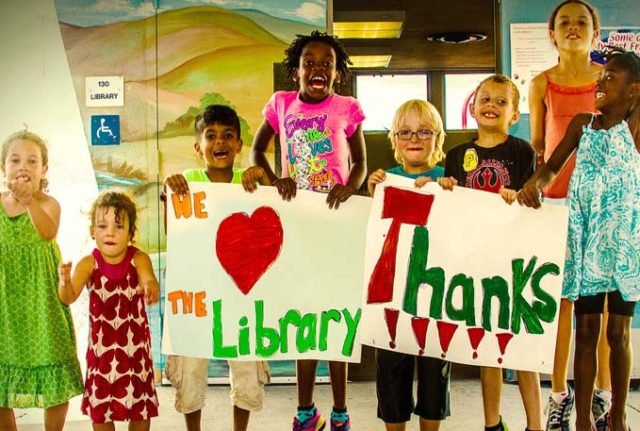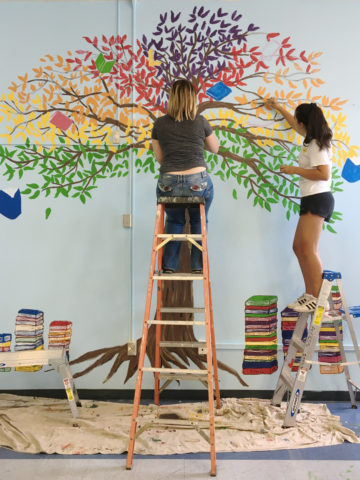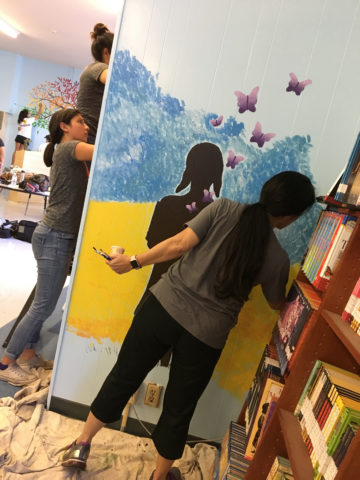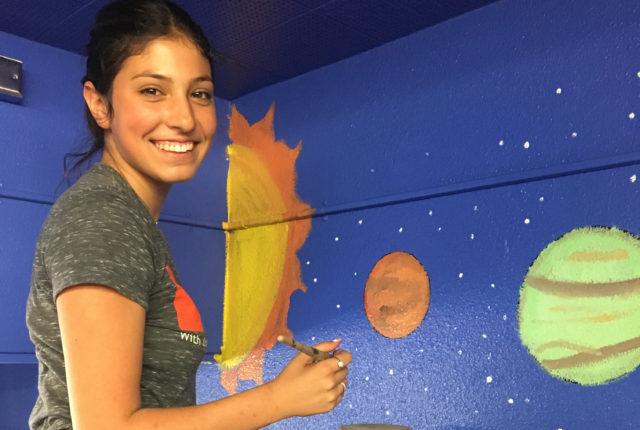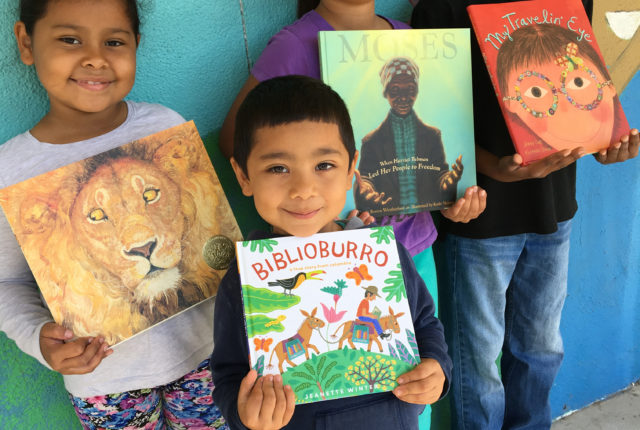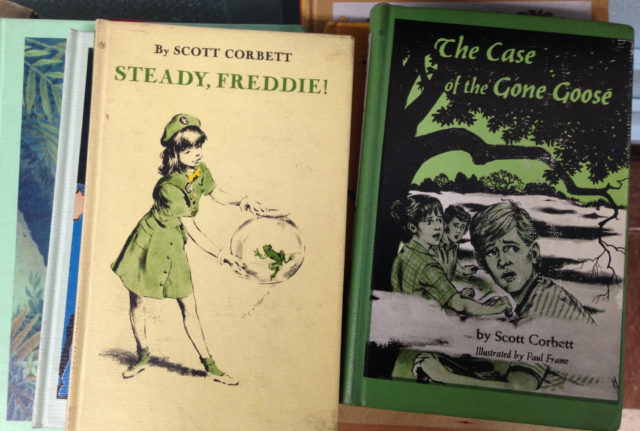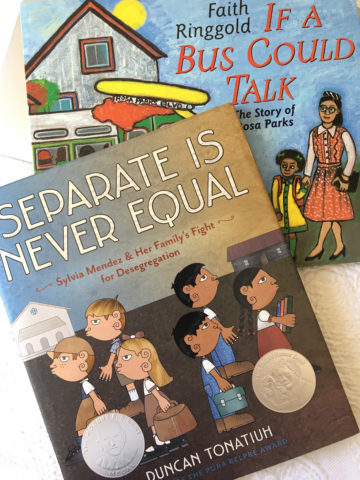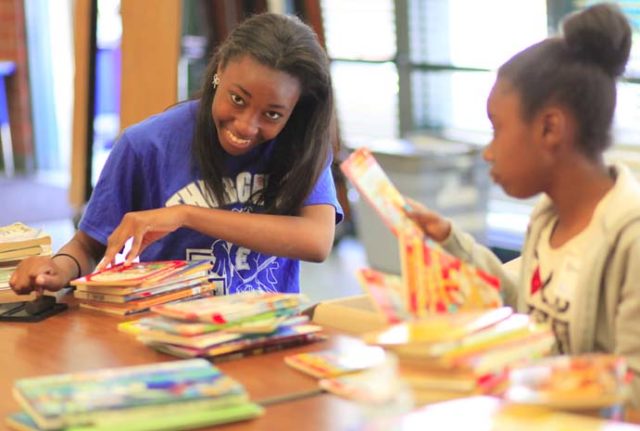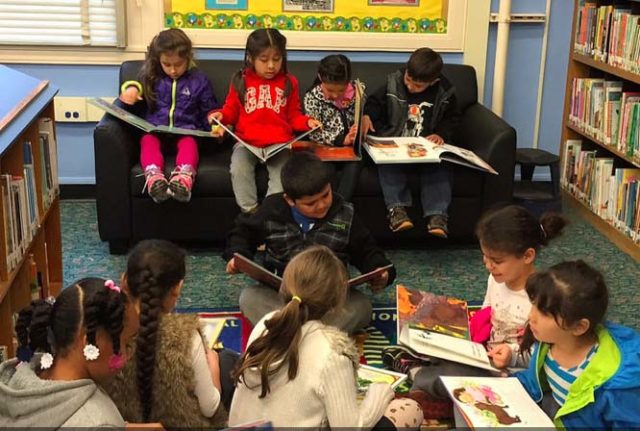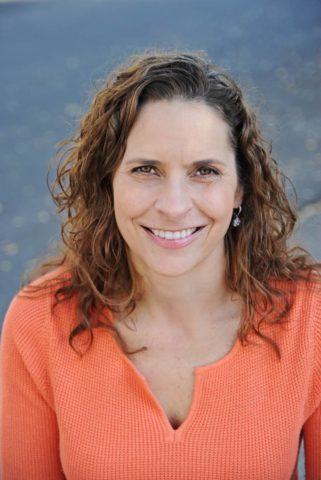These parent volunteers are bringing school libraries back to life with color, comforts, and — most of all — books
Mike Szymanski | February 5, 2018
Your donation will help us produce journalism like this. Please give today.

Washington Elementary students with their new library books. (Courtesy: Puente Strategies)
* Updated Feb. 9
Kids rarely stepped foot in the library at Washington Elementary in Compton.
“It was dusty and damp in there, it was not very welcoming for kids at all,” Principal Diana Phillips said. “We had a lot of very old books that children were not interested in and none of the modern titles. Kids didn’t use it, and teachers didn’t schedule time in the library.”
But now the library is buzzing. A team of volunteers from Access Books and school parents spent a Saturday last fall rehabbing the space and stocking its shelves. The school, which serves 420 students in a mostly Latino community, now hosts puppet shows, parent trainings, and school elections. There’s even a small stage for students to perform and a hub for small assemblies.
“It is now the heart of the school,” Phillips said. “It’s a very lively place, and it was done for no cost.”
Phillips saw how a team of volunteers from Access Books transformed a library at Jefferson Elementary, where she worked previously, and called Rebecca Constantino, the founder and head volunteer of the program.
“Rebecca has a reputation at a lot of these poor neighborhood schools, and they came in over a weekend and stocked the shelves and painted,” Phillips said. “It is now so colorful and the students love it.”
Budget cuts after the recession forced the closure of some LA Unified libraries. By the fall of 2016, all had reopened, but with outdated books.
Today, LA Unified has 17 elementary schools without a library aide, and 21 high schools without a teacher librarian. Part-time aides work at 27 other high schools, even though it’s recommended that high schools have a full librarian to teach research techniques. State guidelines say there should be 28 books for every student, but at LA Unified, it’s 18 books per student.
Board members last year passed a resolution asking for a report, which recommended the district spend $15.9 million to upgrade its book collection and $1.8 million for additional staff, but no money was added to the library budgets for either staff or books.
So school libraries — especially in poor neighborhoods — have had to depend on charitable groups such as Access Books, Heart of America and the Jewish Federation of Greater Los Angeles. Access Books is the only group solely focused on improving libraries and run completely by volunteers.
For nearly two decades, Access Books has helped 270 schools serving 188,700 children by giving out nearly 2 million new books — mostly in LA Unified. They’ve recently expanded to San Bernardino and will soon be in schools in Northern California.
- Washington Elementary School students. (Courtesy Puente Strategies)
- The learning tree at the new Washington Elementary library. (Puente Strategies)
- Parents, staff, and students help. (Puente Strategies )
- Claire Freedman, Access Books volunteer at 93rd Elementary. (Puente Strategies)
- Washington Elementary in Compton. (Puente Strategies)
- Older books that are taken out of the collection. (Puente Strategies )
- Some of the new books. (Puente Strategies)
- Students help at the new library. (Puente Strategies)
- A new active library at Washington. (Puente Strategies)
- Rebecca Constantino who started Access Books. (Courtesy Access Books)
“We want to save libraries, we won’t go into a school where there’s not a commitment by the principal to keep a library,” said Constantino, who started the nonprofit program out of her car 18 years ago out of concern for children without good libraries. “It shows a real lack of vision to close your school libraries. We have to know that the principal and the parents want a good, strong library.”
In 1999, Constantino saw that a private school in the upscale community of Brentwood was tossing nearly brand new books because the library had no space. She put as many as she could in her car — she later figured she could fit about 4,000 books — and took them to an underserved school.
“We are shocked by the disparity in libraries and believe that no matter what part of the city a child lives in – every child deserves access to a safe, beautiful school library filled with books they want to read,” said Constantino, who has a doctorate in language, literacy and learning. “If you make your library better, your test scores will get better. Kids want to read.”
A typical library project takes about five months to put together with the volunteer-run group selecting titles that are not only popular among young readers but also culturally relevant and working with principals to plan for the right murals to make the space more inviting for children. Then on a single day, usually a weekend, about 40 volunteers and parents, as well as the principal and librarian, paint the walls with the murals, add comfortable furniture like a leather couch and reading rug, and about 5,000 books. The trained volunteers organize the library and process the books according to district standards.
District officials were skeptical at first — it took six years to even get a meeting with them, Constantino said. The district wanted to make sure that cataloging the books was done in the same way as the rest of the district, and that no labor rules or library regulations were violated.
Esther Sinofsky, the administrative coordinator of Integrated Library and Textbook Support Services for the district, praised the group’s work and said they’ve developed a “productive relationship.”
“Access Books provides materials that are age-appropriate and aligned with the curriculum. The organization has upgraded several of our school libraries, creating inviting environments that support student success,” Sinofsky said.
Access Books has a waiting list of principals who have requested help through their website.
* This article has been updated with new numbers of schools and children served by Access Books, the date of the work in the Washington Elementary library, and the process of improving the libraries.
